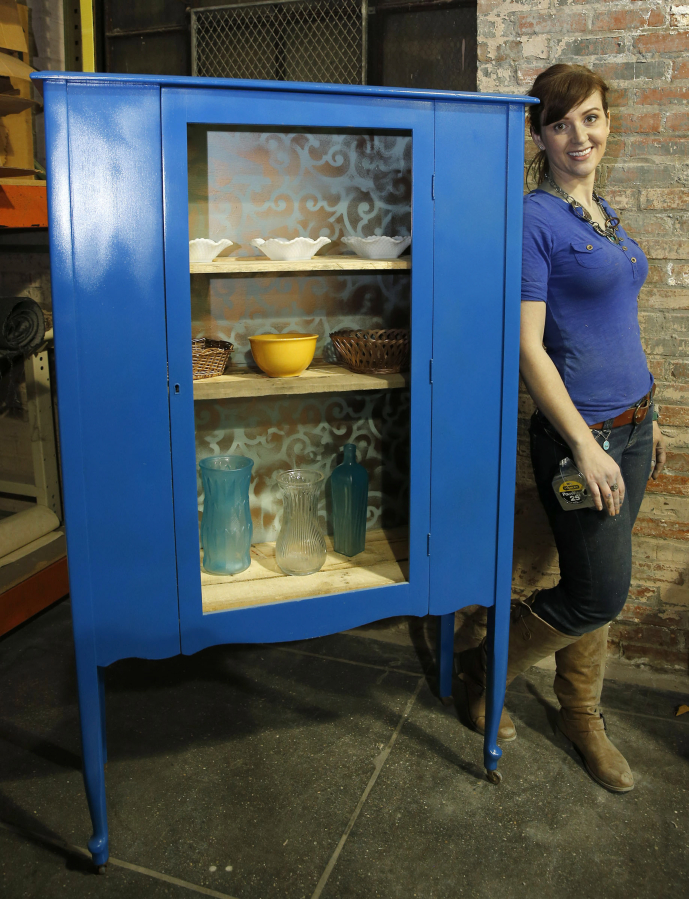Clements walked us through a do-it-in-one-day thrift-store-find transformation.
• Find a piece with good bones: something sturdy that’s made of solid wood that won’t fall apart as you tinker. Clements selected a mission-style china cabinet (ReStore’s price: $35) that was missing the glass on its permanently locked door and all its shelves. But it had sweet simple lines. “A lot of people would walk by that and shrug, but it’s well-built,” she said. Her vision: With a few adjustments and a lot of paint, it could be a stylish bookshelf.
• Gather supplies. For this project, Clements used a drill/screwdriver, a saw (her portable saw, the BladeRunner, costs about $100; a miter saw would also work), painter’s tape, fine-grit sandpaper, pallet wood, stain, a drop cloth, cleaning cloths, cardboard, a tape measure, a level, and screws. Spray primer and spray paint are key to finishing a project like this in six to eight hours. Disposable wood-finishing wipes, newly available at hardware stores, allow you to apply stain quickly and neatly.
• Clements lightly sanded the cabinet with the grain, making it just rough enough to catch the paint. Then she wiped off the dust with a cloth. She sprayed the entire cabinet with primer. (The key is using quick strokes to lightly dust the surface with paint.) She waited a few minutes and applied a second coat. If she got too close and paint started to pool or drip, she blotted the excess away with a clean cloth.
• She lined the back edges of the cabinet with painter’s tape to protect them from paint. Then she used scrap cardboard to shield the interior of the cabinet and gave the exterior a coat of cobalt blue. Again, she sprayed in quick, light coats. The paint label will say how long you have to wait before a second coat. “If you didn’t use the whole bottle, turn it upside down and spray until it’s clean, and that clears the nozzle. Then, when you go back to it a year later, you can use it again.”



